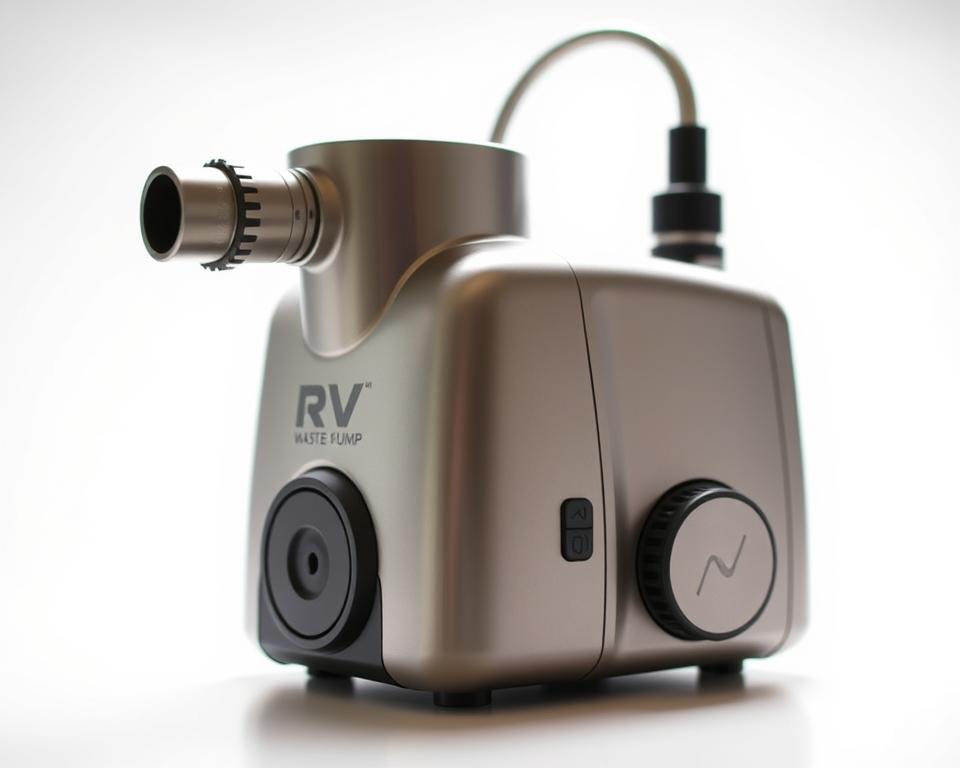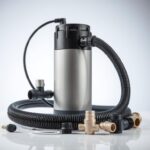Recreational Vehicle Sewage Pump Handbook: Vital Upkeep Recommendations
Have you given thought to the mechanics of your camper’s waste disposal system? Being aware of the intricacies of your RV sewer pump can avert mishaps, enriching your outdoor adventures. It focuses on overseeing waste smoothly and dodging bad odors. In this handbook, you’ll discover essential maintenance methods for RV septic tank pumping. Every tip is intended to maintain your waste disposal system’s ideal functionality.
Learning About Your Camper Waste Pump Configuration
The camper sewage pumping setup is vital for refuse disposal, making camping more enjoyable. It consists of two main tanks: the sewage holding tank for solid waste and the grey water tank for water from sinks and showers. Telling apart these tanks is necessary to ward off clogs and keep your RV operating smoothly.
An RV waste grinder is a favored option for refuse disposal. It chews up solid waste into fine pieces, easing disposal. Alternatively, you can choose, a traditional camper sewage pump is available. It efficiently moves waste without shredding, for those wanting a simpler option.
Understanding your RV’s waste pump setup is essential to warding off problems and ensuring hassle-free checks. Operating the system properly can prevent messes, enhancing your outdoor adventures.
Significance of Routine Care
Maintaining your RV sewage disposal pump is crucial for a trouble-free journey. Without proper servicing, you may run into odors, clogs, or backups. These issues can ruin your road trips.
Scheduled upkeep stop such complications and prolong your system’s life. By inspecting hoses and seals, you enhance efficiency. A properly cared-for RV sewage pump secures hygienic operation, letting you enjoy seamless excursions.
Ongoing care also yields financial savings over time. Lack of care can cause significant problems, requiring high-cost fixes. Committing to regular maintenance keeps your motorhome in optimal state, saving money long term.
When to Empty Your RV Septic Tank?
Knowing the right time to pump your RV Septic Tank is key for its upkeep. It’s suggested to pump every three to five days during use. For quick getaways, post-trip emptying may do the trick.
Frequency depends on several factors. Tank capacity and usage level are important. Best practice is to pump when it reaches two-thirds full. This helps ensure smooth flow and prevent obstructions.
Monitoring your RV tank fill level is key for a hassle-free trip. Manage your camper’s waste to avoid issues while traveling.

Optimal Methods for Tank Disposal
Safely purging RV tanks is crucial for your motorhome’s hygiene and reliability. Always empty first the black tank to let the grey water rinse leftover solids. This approach avoids clogs and ensures uninterrupted discharge.
Select a top-grade sewer hose for disposal. A robust hose prevents leaks and locks connections. Use a tank rinser for a intensive cleanse, using water pressure to remove residual sludge, enhancing cleanliness.
Comprehensive emptying prevents residue buildup, avoiding foul odors and potential issues. To maintain an efficient sewage system in your motorhome, follow these guidelines:
- Always add a tank treatment after emptying to keep odors at bay and digest residue.
- Watch capacity to avoid leaks.
- Perform routine pump inspections for clogs and wear.
- Flush your tanks thoroughly monthly or bi-monthly, even during infrequent outings.
Adopting these techniques enhances your sewage system’s durability and efficiency, ensuring pleasant trips.
Keeping Smells and Blockages at Bay
For a enjoyable trip, preventing foul aromas is crucial. Maintain adequate water level to aid in decomposition, stopping unpleasant odors. Also, using RV-safe toilet paper helps prevent clogs, avoiding backups.
For improved waste handling in campers, try enzyme-based tank treatments. These process sludge thoroughly, reducing effort. Check the vent line often to keep air moving freely in the plumbing system.
Cautious flushing is vital to avoiding tank issues. Do not flush wipes, feminine products, and paper towels. These non-compostable materials can cause serious blockages. Following these tips helps maintain a cleaner camping environment.
Care Recommendations for RV Waste Pumps
Servicing your RV waste pump network is vital for smooth journeys. Verify seal condition frequently to avoid drips. Leaky seals can cause unexpected spills, harming your RV.
To remove stench and maintain cleanliness, sanitizing is essential. Perform a deep clean every few months to prevent buildup, ensuring the system performs reliably. These steps are critical for maintaining a mobile macerator, promoting longevity and smooth service.
Lubricating valves is another important task. It helps prevent leaks and enhance functionality. Monitoring tank sensors is key for exact data, preventing spillovers and unexpected pump issues. Maintaining vigilance makes your RV adventures cleaner and more enjoyable.
Clues for Hiring a Professional Pump Service
Identifying septic problems ahead can protect you from costly repairs. A primary clue you need a expert emptying is slow draining. When sinks and toilets take longer to clear, it often points to blockages. It suggests your system may be jammed.
Persistent odors are another distinct indicator of sewage troubles. Bad odors lingering despite cleaning suggest trapped waste. It’s crucial to inspect the clear elbow attachment when dumping waste. Remaining waste visibility signals it’s time for pro maintenance.
Technicians utilize jet machines to blast through tough clogs efficiently. Neglecting these signs can escalate into major problems. Therefore, it’s essential to seek help immediately when issues arise.
| Warning Signs of Waste Problems | Recommended Response |
|---|---|
| Sluggish Emptying | Check obstructions; call expert service |
| Ongoing Foul Scents | Check vents; contact pro service |
| Visible Waste Residue | Arrange expert emptying and cleaning |
Selecting the Ideal RV Waste Grinder
When choosing an RV macerator pump, weigh its capacity, durability, and compatibility with your RV’s size. A top-notch macerator is critical for effective waste grinding. This is especially crucial for RVs requiring constant pumping. High-end pumps optimize sewage handling, ensuring a better travel experience.
A range of options cater to different preferences. For an informed decision, focus on these critical elements:
- Capacity: Confirm volume capability suits your needs.
- Durability: Select long-lasting equipment.
- Ease of Use: Look for user-friendly pumps.
- Compatibility: Ensure it integrates with your system.
Carefully considering options when choosing an RV macerator pump optimizes travel enjoyment and ensures proper sewage disposal.
RV Sewer Pump Problem-Solving
Effective problem-solving for your RV sewer pump is essential in resolving common sewage issues before they worsen. If you notice lethargic outflow, surprise blockages, or persistent odors, take immediate action. These are clear signs of malfunction requiring attention.
First inspect the pump, its connections, and hoses. Look for any clogs that could slow flow. Ensure inlet and outlet fittings are tight. Also, verify the pump’s power supply for stability.
If basic checks fail to reveal the issue, note the pump’s sound. A unit that’s abnormally loud or abnormally quiet may have internal damage. Also, check for leaks, as these can exacerbate sewage problems. With these troubleshooting steps, many RV owners identify and fix issues early, avoiding costly repairs.
Long-Term RV Sewer Pump Care
For continued reliability, dedicate yourself to regular sewer pump upkeep. Clean the system consistently to prevent clogs. Implement and follow a maintenance routine, keeping everyone informed of their roles. This significantly boosts your waste system’s lifespan.
Training yourself and others on correct flushing habits is vital. This forestalls issues and fosters shared responsibility. The result benefits both users and the sewer system.
- Inspect plumbing and hoses periodically
- Maintain clear filter screens
- Scheduling professional servicing annually
- Using appropriate tank treatment chemicals
Abiding by these practices boosts your camper’s sewage system’s durability and keeps it healthy, making travels more comfortable.
To Summarize
Keeping your RV sewer pump in prime condition is crucial for uninterrupted camping adventures. Regular attention to RV sewer system maintenance drastically lowers problem risks, letting you immerse in the journey. By understanding your system and applying reliable sewage methods, your trips will be free of waste management woes.
Applying the critical tips from this guide promotes RV waste management and advances your travel comfort and safety. Maintain peak performance by following best upkeep practices and tackling potential issues promptly.
Being watchful and well-informed about your RV sewer system brings dividends. It guarantees homely comforts while exploring. Wishing you joyous and relaxed journeys!
Frequently Asked Questions
How can I tell it’s time to empty my RV Septic tank?
Pump the RV Septic tank when it hits 66% capacity.
How do black and grey tanks differ?
Black tank is for sewage waste. Meanwhile, the grey tank collects water from basins and showers.
What is the recommended maintenance schedule for RV sewer pumps?
Perform maintenance every few months.
Recommended products for RV sewer pump maintenance?
Use enzyme-based treatments safe for RVs.
How to keep my camper’s sewer lines clog-free?
Avoid flushing non-biodegradable items.
How to know if I need expert pump-out?
Persistent smells or gurgling indicate pro help.
Making your RV macerator pump work better?
Ensure capacity and compatibility.
What should I check during a deep clean of my RV sewer system?
Flush lines, replace seals, and sanitize components.
Maintaining my RV sewer system over time?
Adopt regular deep cleans and consistent sanitation.
Septic pumping frequency for heavy RV use?
Service tank frequently for group travel or heavy usage.


